Last updated on December 28, 2023
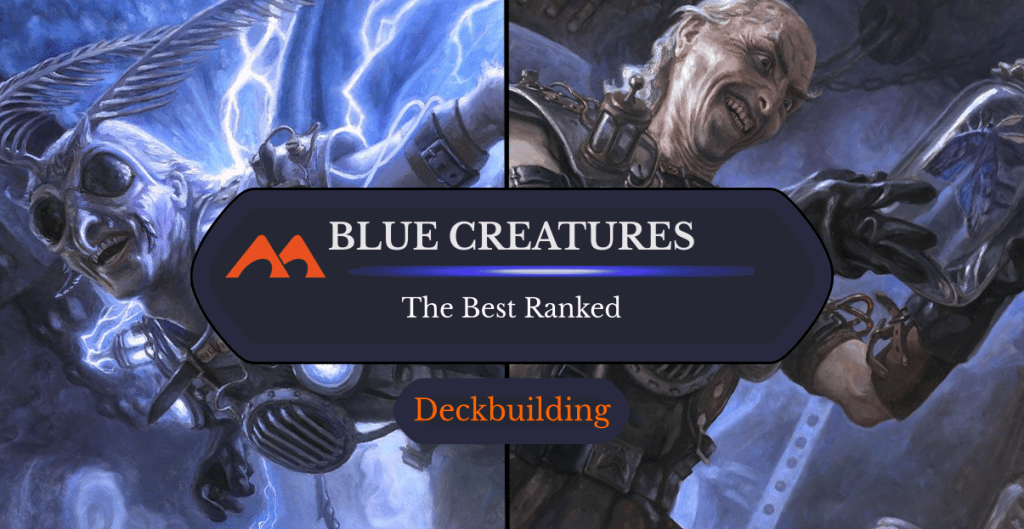
Delver of Secrets / Insectile Aberration | Illustration by Matt Stewart
When you think of blue, you probably don’t think of aggressive creature decks. In fact, you probably don’t think of creatures at all. Despite blue’s typical strategy of control and spell-based interaction, it has some of the most powerful and format-defining creatures in the game across Magic’s 30-year history.
Today I’m going over what makes the best blue creatures great, what they’re played with, how they work, and where they fit into the list on a broader scale. For some cards we’ll have to go way back to a time before Modern Horizons 2 reshaped much of the game.
Ready? Let’s go!
What Are Blue Creatures in MTG?
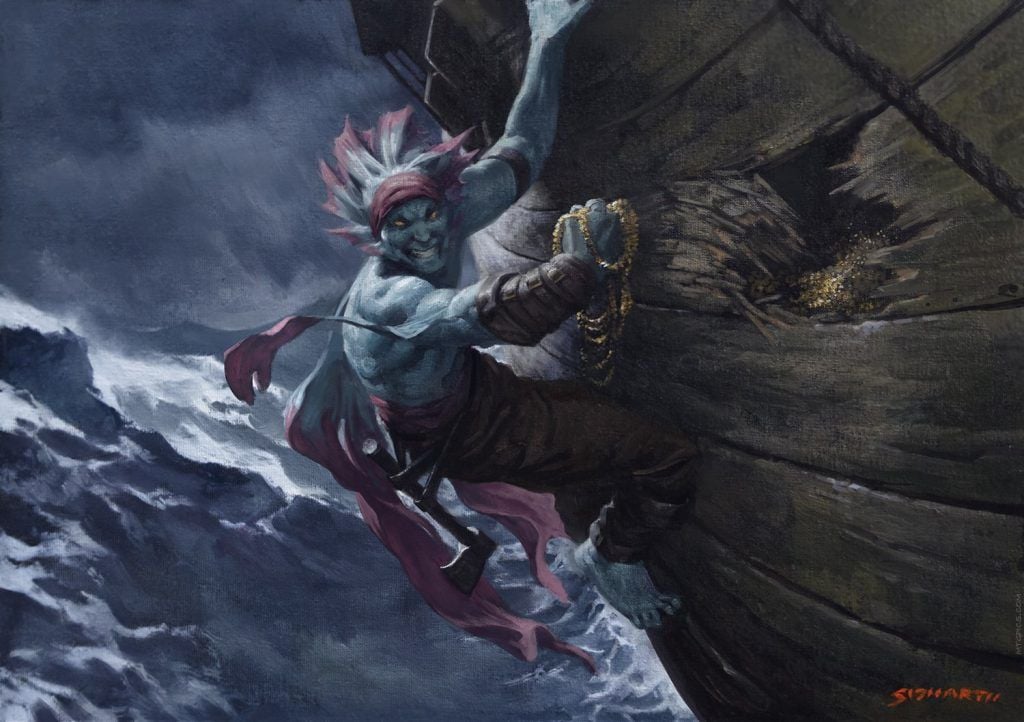
Hullbreacher | Illustration by Sidharth Chaturvedi
Blue creatures have the creature card type and only blue and colorless mana in their cast cost. I’m also specifically looking at blue color identity, so cards with other mana pips in their rules text are disqualified.
I’m specifically wording it as simply being a creature as a type on the card to include the gods and other cards which aren’t creatures unless they’re in play and have met some condition. These are certainly very respectable and powerful creatures, so just because they aren’t always a creature doesn’t mean they aren’t worth talking about. If you happen to disagree, you can just pretend they’re not there!
I’ll also be discussing each creature in the context of what they’re used in, and what you’re getting for the mana cost. For example, it wouldn’t be right to rank Thassa's Oracle by itself as a card-advantage engine when it’s almost always used as a combo piece to win the game.
If that were the case and we were simply judging cards on the power of their abilities, then Thoracle, or even something like Delver of Secrets, would be blown out of the water by whatever battlecruiser creatures you can think of (Hullbreaker Horror). That said, it takes a lot of work to make something like Hullbreaker Horror tick. Even with that in context, other creatures that provide exceptional value rank higher due to their versatility and consistency.
#33. Trinket Mage
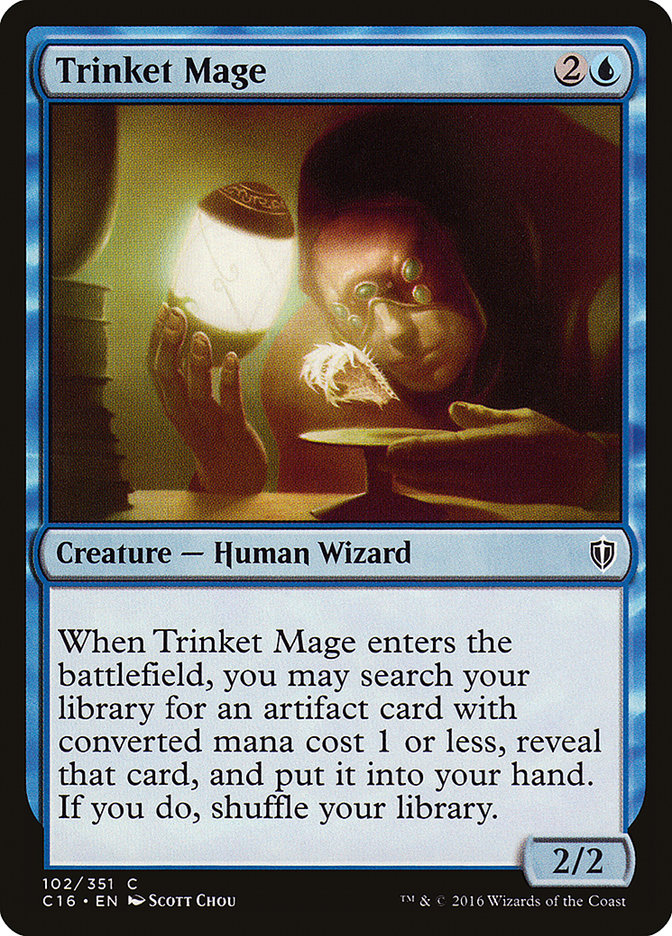
Trinket Mage is a card you probably own multiple of and have played countless times. It’s used in Commander almost exclusively, but its consistency, wide level of use, and importance in finding cheap mana rocks makes it a very powerful and useful creature. It’s certainly not the best, and I’m sure you could think of ways it could be better, but it’s a strong start!
#32. Thieving Skydiver
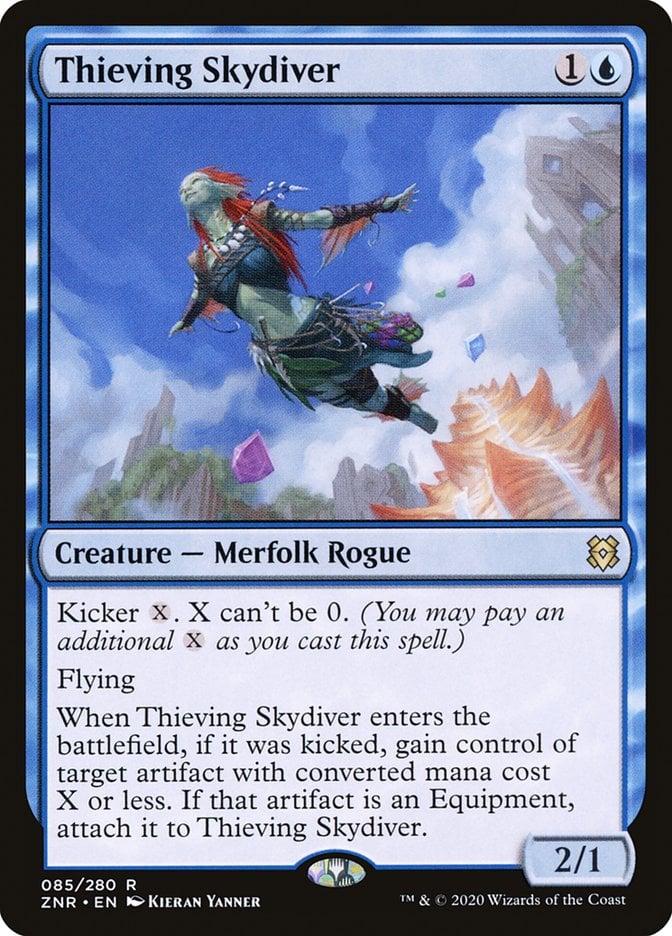
Thieving Skydiver is another cheap creature that deals with artifacts. You can’t kick Skydiver for 0, which is an important drawback from making it too powerful, but it’s still strong nonetheless. Stealing cheap artifacts is always a big change in advantage. Not only are you gaining a flier and a cheap artifact to put to use—usually a Sol Ring if you’re playing Commander—but you’re also taking something away from your opponents.
The attachment bonus if it’s an equipment is nice, especially if you manage to steal something like Colossus Hammer, but it’s mostly just the sprinkles and icing on top. It’s not the selling point.
#31. Thassa, Deep-Dwelling

Thassa has had more than a few namesake cards, and Thassa, Deep-Dwelling is probably the best iteration. It’s not too hard to turn this blue enchantment god into a creature, and the flicker effect on your end step is a great way to get consistent ETB triggers in blue or Azorius blink decks.
I don’t dislike the tap ability; it’s not limited to once per turn and it doesn’t require Thassa to tap. Still, it’s mostly just kind of there. It’s not a huge selling point of the card. While I’m sure you’ll have the chance to put it to some use, it’s a little costly and isn’t the focal point of this creature.
#30. Archetype of Imagination
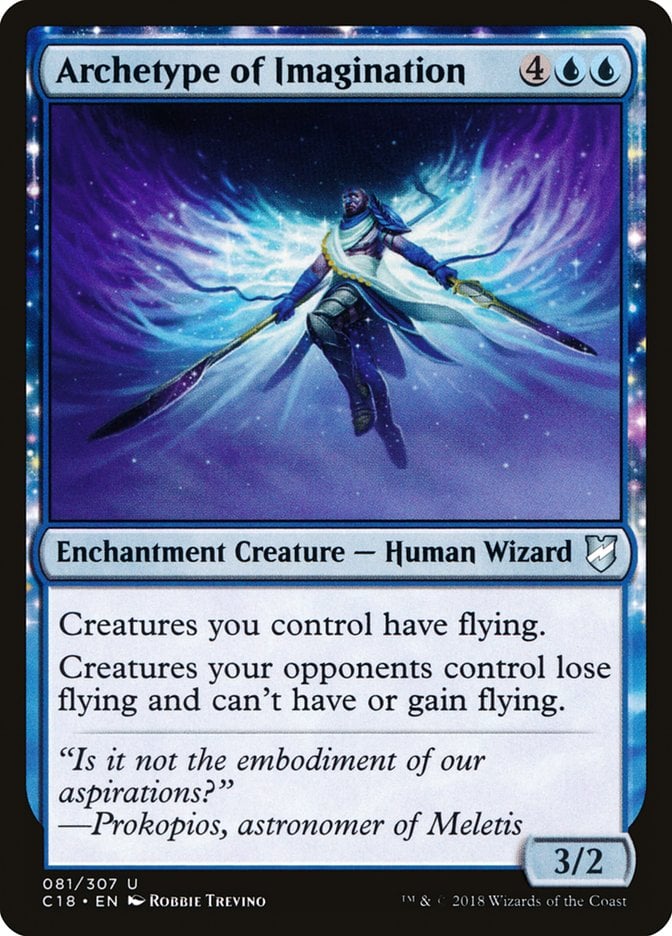
Archetype of Imagination is so much better than the other archetypes from the cycle that you probably didn’t even know about the others! At least, unless you played Theros block.
Archetype of Imagination is a 3/2 flier with a static effect that gives all creatures you control flying while stripping your opponents’ creatures of flying. That’s a very deadly combination that can turn a stalled board state into a winning one for you. On the other hand, it can help shut down other pesky flying creatures in a Commander pod, which is far more common than you might think.
#29. Venser, Shaper Savant
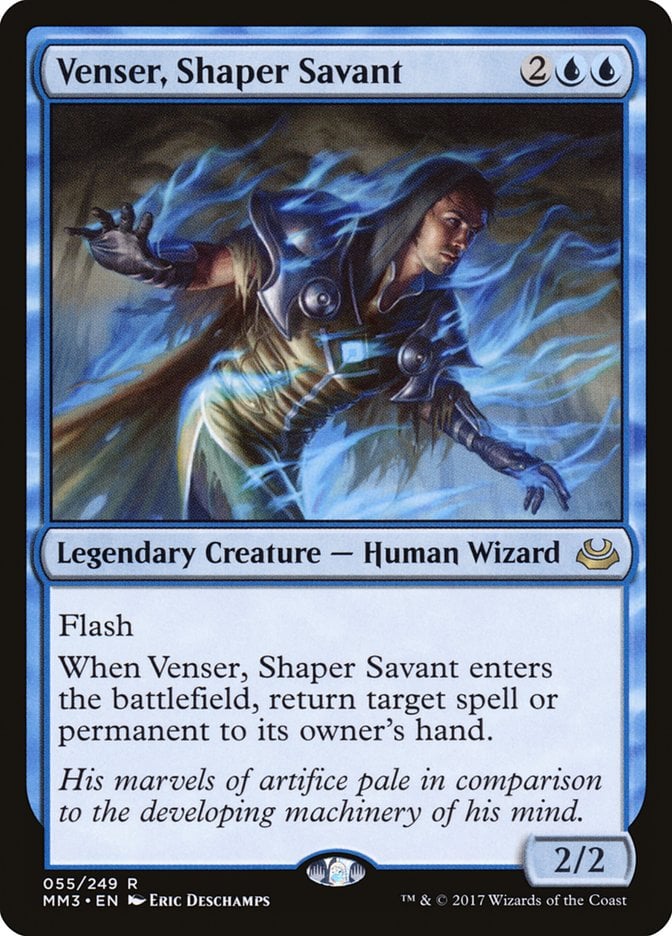
Venser, Shaper Savant is really just a classic. It’s been around for a long time, seen plenty of reprints, and still sees some play. While it used to be included in decks here and there in other formats, it’s mostly just an inclusion in blink Commander decks now for its powerful ability.
It’s one of the only cards that goes beyond just blinking some permanent you control and actually hitting any permanent or spell. That wide targeting scope makes it quite strong despite the 2/2 statline for 4 mana.
#28. Vendilion Clique
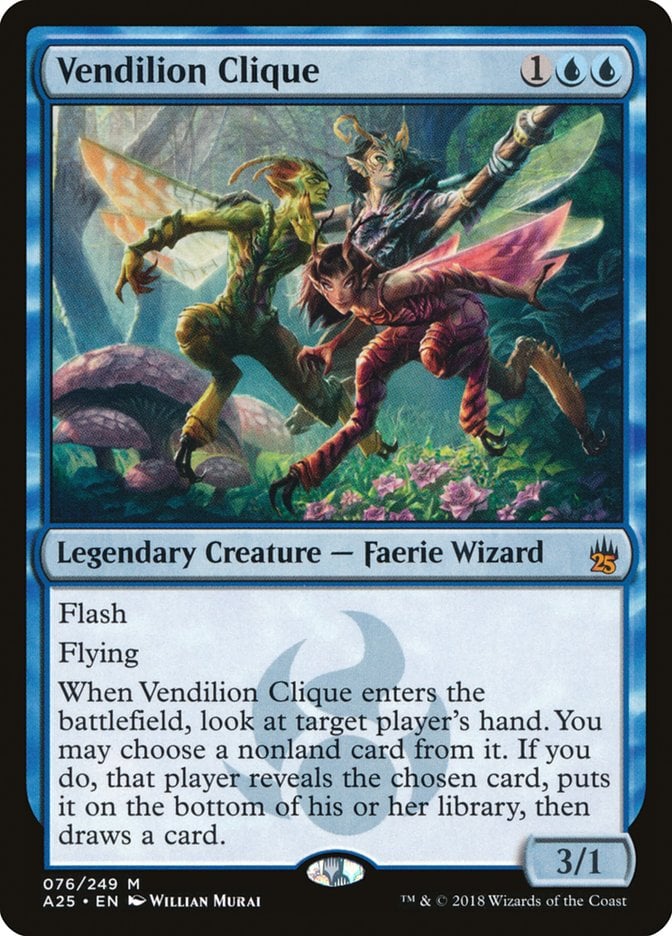
In addition to having some of the best art in Magic, Vendilion Clique has seen play just about everywhere for its utility and attacking potential as a 3/1 flier. Currently, you only really see this card in faerie tribal decks, cubes, and Commander decks, but it still holds its own and provides a ton of information for the caster. Personally, I really enjoy playing this in Commander purely for the political potential of revealing what cards are in a player’s hand!
#27. Talrand, Sky Summoner
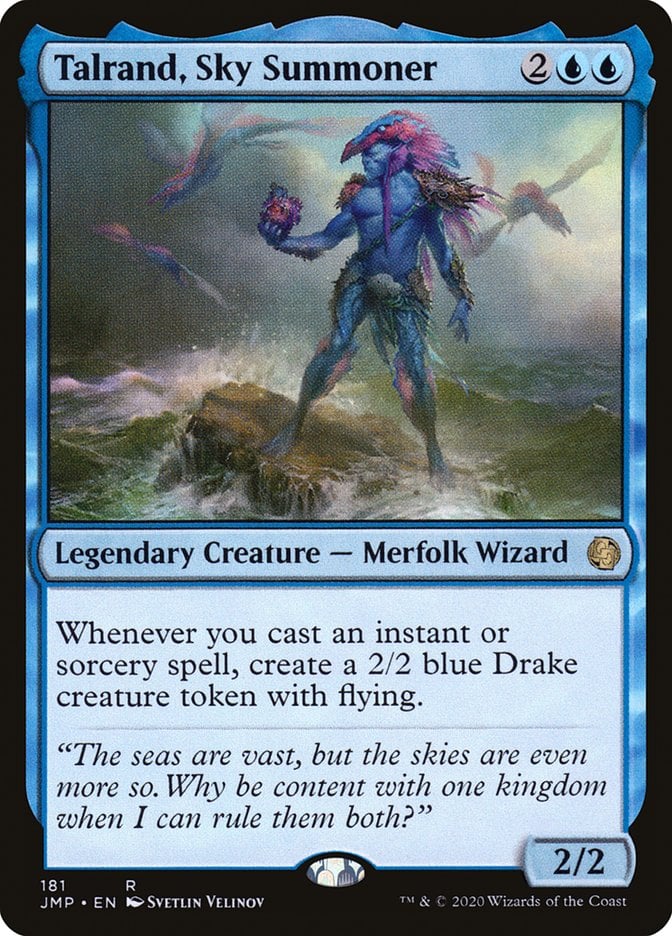
Talrand, Sky Summoner has been around for a long time and is still one of the more popular mono-blue commanders out there. A single 2/2 flying drake may not seem like much at first, but once you start really churning spells and practically storm off each turn, you’re going to quickly build up an army of fliers for use at your disposal.
#26. Archmage Emeritus
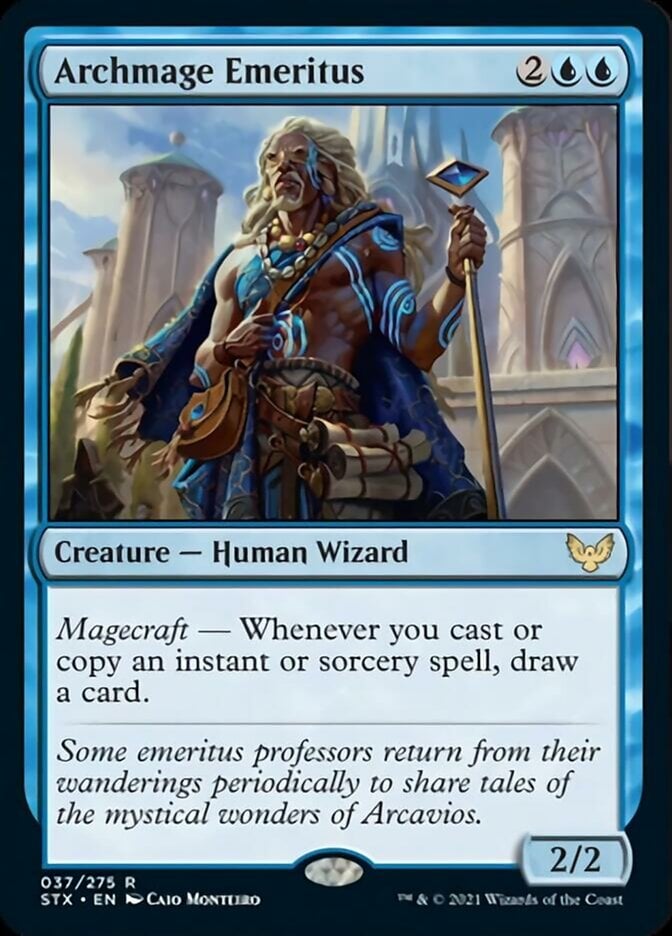
Next up is Archmage Emeritus, a 2/2 for that draws you a card whenever you cast or copy an instant or sorcery. Like Talrand, Sky Summoner, this card is heavily underestimated until you get to the point where you’re casting upwards of a dozen spells in a single turn. Emeritus has a huge benefit ceiling and very little downside.
#25. Subtlety
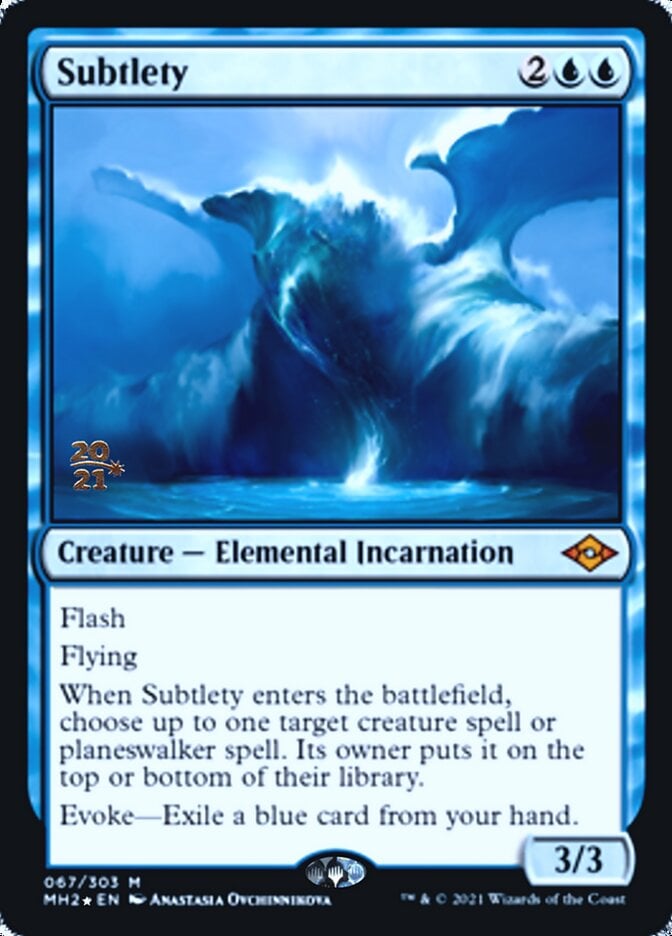
While Subtlety is certainly one of the weakest elemental incarnations out of Modern Horizons 2, it’s still a lot stronger than most players give it credit. When it enters the battlefield, it puts a creature or planeswalker spell from the stack back on either the top or bottom of the owner’s library.
It’s pure tempo. It does both roles of a mono-blue deck: be a 3-power flier that can go in for beats every turn while also delaying and stalling your opponent’s threats and development. It’s still a quite strong creature, even if it has harsh competition in the Modern format.
#24. The Reality Chip
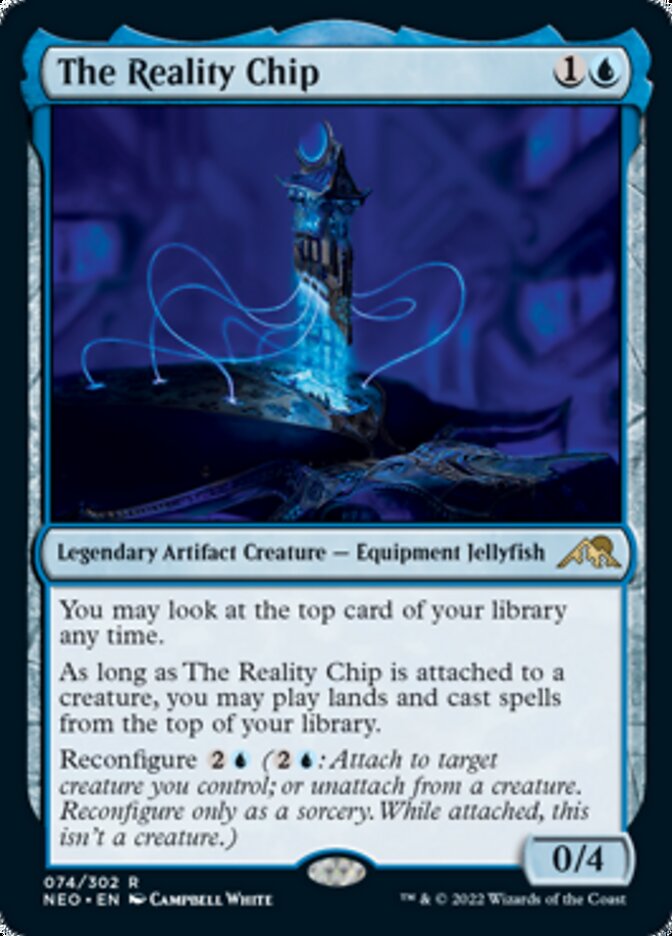
It feels weird to call The Reality Chip a creature, but it certainly is. It mostly plays the role of a card-advantage engine that helps inform you and keep you ahead of your opponents in the early game. I personally enjoy this in blue-based control and combo decks in Commander. It’s cheap, holds most things back on turns 3 through 5, and can help you make better decisions along the way.
#23. Peregrine Drake
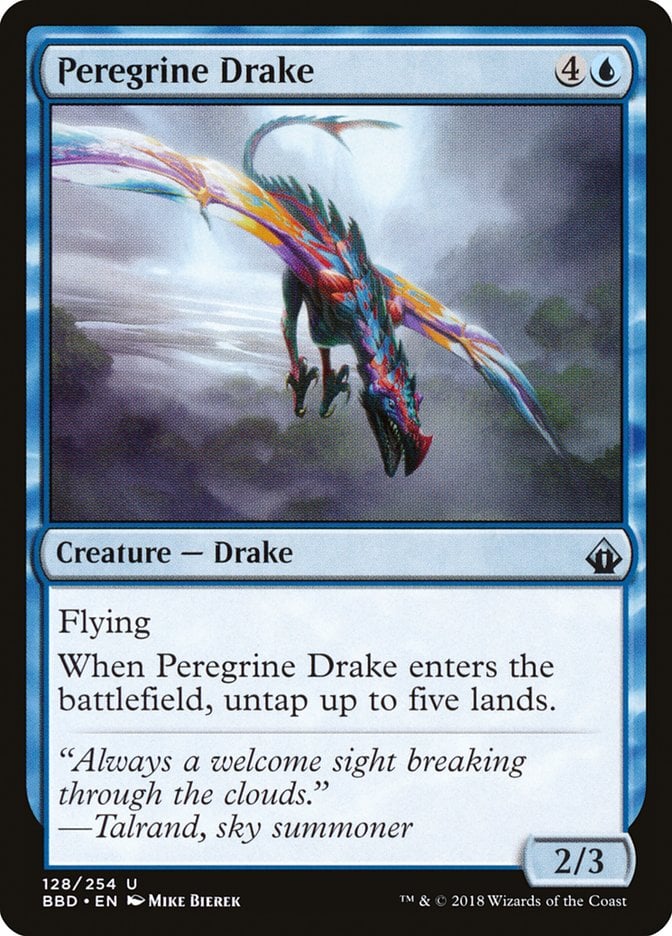
Peregrine Drake is basically only used as a combo piece in blue and Simic decks, but it fulfills that role quite well. Not only does it generate infinite mana if you have a way to flicker it or replay it for less than it costs to cast, but it also—at the absolute worst—is a free 2/3 flier. That isn’t a huge upside, but being able to get something into play in a worst-case scenario is still much better than a combo piece that’s otherwise dead in your hand.
#22. Glen Elendra Archmage
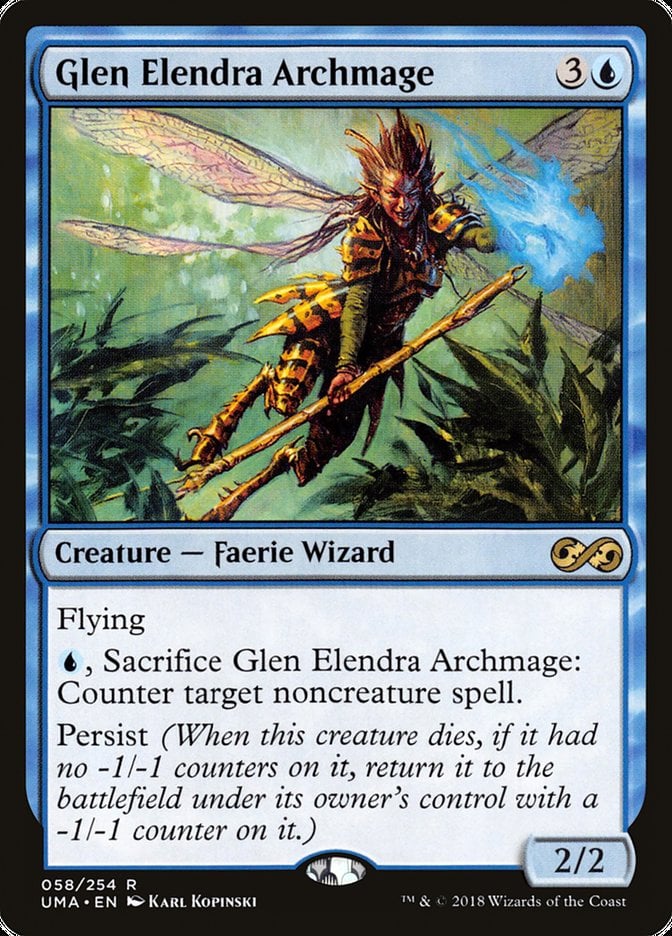
I like Glen Elendra Archmage for the same reason I like Subtlety. It fulfills both important roles of blue tempo decks as a cheap flier that can also disrupt your opponent’s interaction. This is truly the heart of blue and the persist ability makes sure it sticks around for just that much longer to keep your opponents down.
#21. Phyrexian Metamorph (and similar cards)
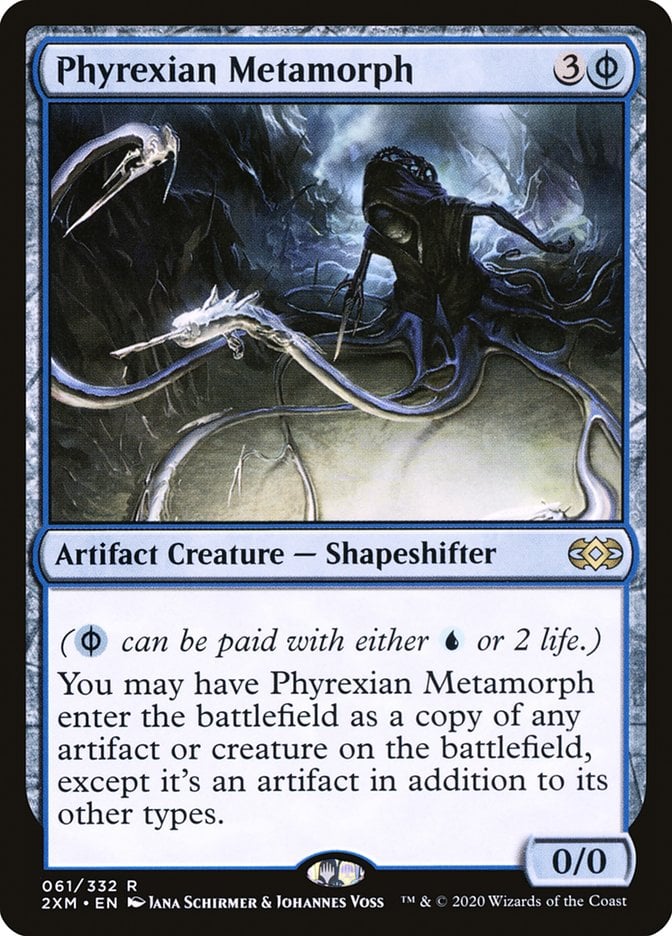
In this slot, while I’m ranking Phyrexian Metamorph, I’m also includingsome other creatures that act as copies of permanents as honorable mentions. That includes, but isn’t limited to, Spark Double, Phantasmal Image, Sakashima of a Thousand Faces, and Clever Impersonator.
While each one does it slightly differently, whether its mana cost, what they can target, or their base stats, they’re all similar enough that I think they’re equal in ability. Sure, some may be much stronger in specific decks or situations, but their base ability is approximately the same.
#20. Jin-Gitaxias, Progress Tyrant
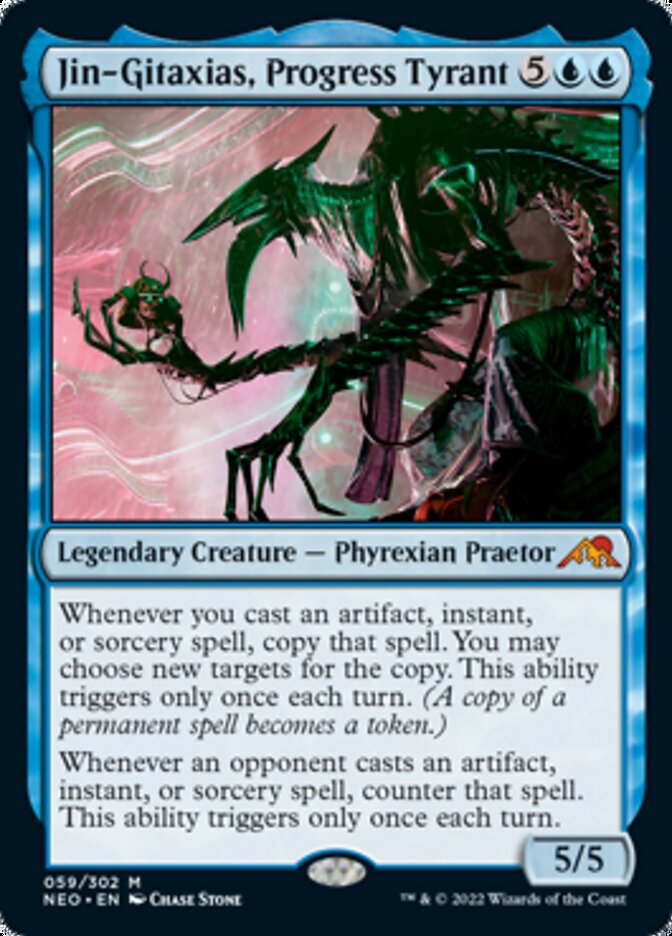
I’ve really enjoyed Jin-Gitaxias, Progress Tyrant since its release in Kamigawa: Neon Dynasty. It really fits the bill not only as a Phyrexian Praetor, but also as to what a 7-mana blue battlecruiser should be. It counters just about everything, does it every single turn, and is a massive pain for your opponents. What’s not to love?
#19. Etherium Sculptor
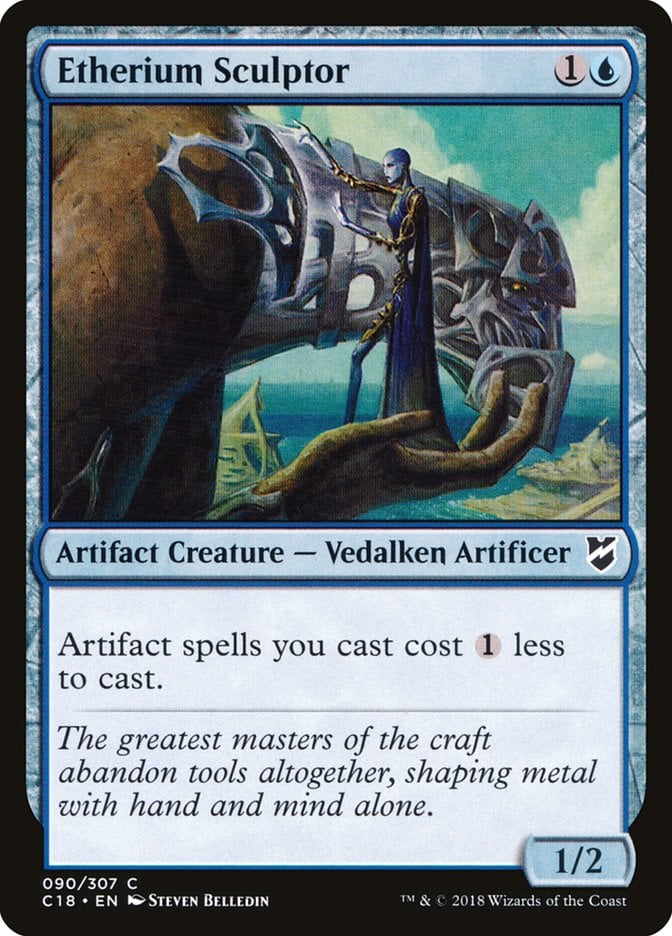
Etherium Sculptor completely defines the deck that it’s included in and provides some of the best value in a 2-mana creature. In addition to being an artifact itself, it provides a mana discount to your artifact spells. Blue is often the main driver of artifact decks, and this provides a solution to the color that’s balanced around not having mana dorks. It really makes you feel like you’re getting away with something when you have this in play.
#18. Consecrated Sphinx

Consecrated Sphinx has been around for quite a long time. It’s always fit in as the bomb flier in Commander that forces everyone else at the table to look at their hand for some kind of removal spell. If your opponents happen to come up short on killing the sphinx, you’re going to be outdrawing them and immediately pulling very far ahead.
#17. Mulldrifter
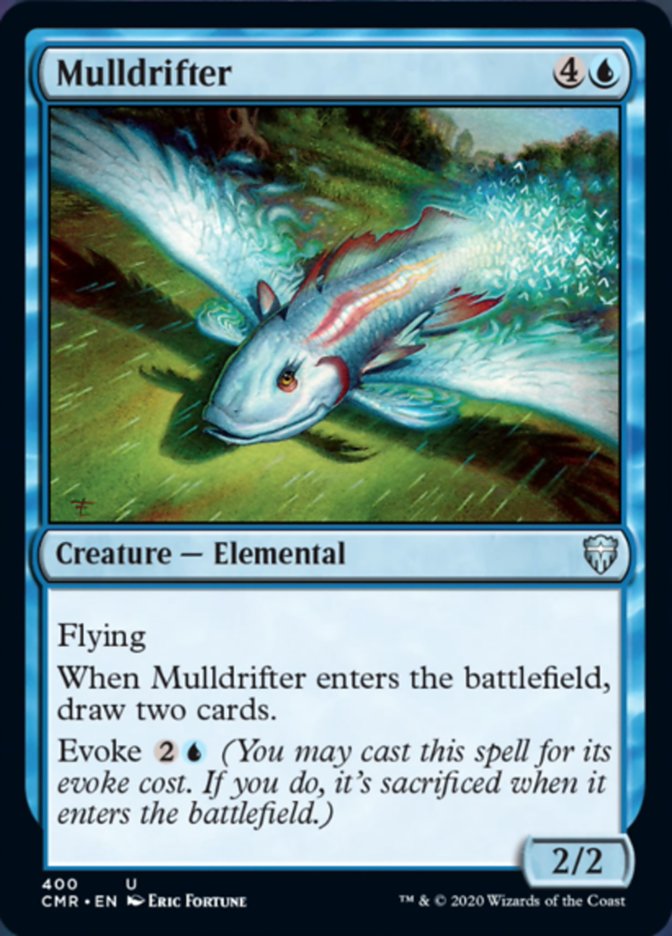
Mulldrifter is one of the most straightforward value-oriented creatures out there. It can be cast on the cheaper side, is card-positive, and is a decent body as a 2/2 with flying. While it’s mostly just a cube card and Commander inclusion now, it still fits in most decks as a great way to spend 3 mana, and that’s a huge compliment for any creature.
#16. Spellseeker
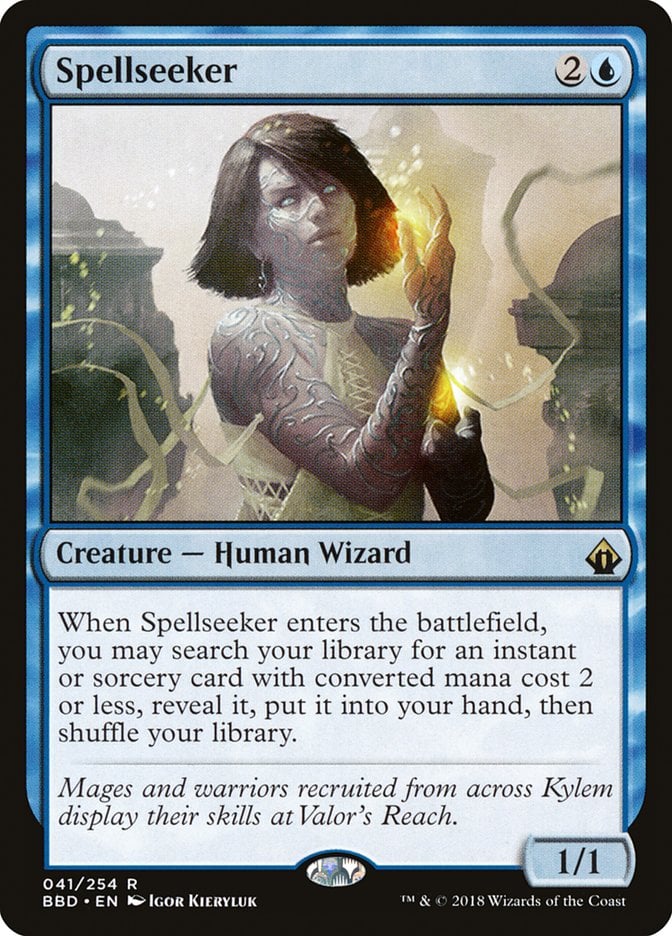
Spellseeker plays a very specific role and does it well. It’s only a 1/1 for , but you’re basically just playing it because it’s a tutor for any instant or sorcery costing 2 or less. That hits so much in blue’s arsenal, let alone other colors, and its ability makes it a worthwhile cast a 3 mana in just about any control or combo deck. What’s better than drawing the perfect answer?
#15. Emry, Lurker of the Loch
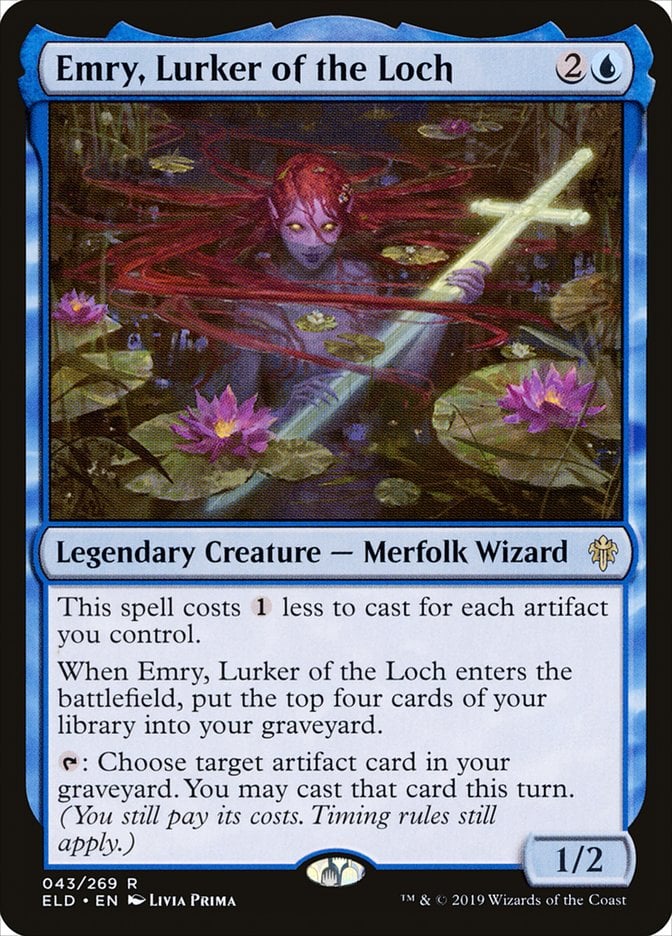
Emry, Lurker of the Loch has seen lots of play in blue artifact decks across just about every format its legal in. It’s potential for early game tempo, card advantage, recursion, and price discounts on your artifacts all add up to an exceptional creature when you factor it in as a 3-drop. It’s a very well-rounded creature and fits blue’s overarching themes and strategies well as a 1/2 Merfolk Wizard.
#14. Urza, Lord High Artificer
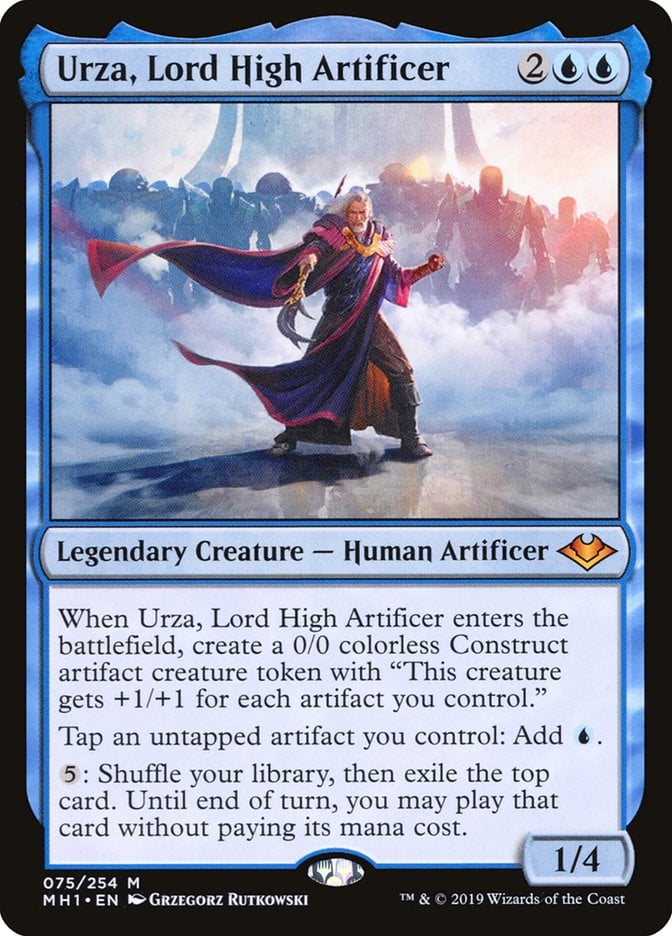
Urza, Lord High Artificer didn’t disappoint when it was revealed to be the classic character’s first creature. It not only provides blue with a ton of mana in artifact decks, which goes a long way in controlling a game or board state, but it also works as an infinite combo engine with its activated ability. Oh, and the construct is great, too. I’ve played this card a lot in cEDH, and it’s a game-defining piece in any pod it comes down in.
#13. Murktide Regent

Murktide Regent is the namesake card of Modern’s most popular deck—and for good reason. It has the potential to come into play as a 2-mana 8/8 flier, and it often does. The right deck, which is full of cheap instants and sorceries, can easily get this into play even on turn two as a 4/4 or 5/5. I don’t care what your opponent is playing. Unless they have the right kind of a removal, such a big flier that has virtually no downside in a deck that isn’t playing Snapcaster Mage is great.
That said, it has virtually no use outside of Modern and Legacy Izzet decks. It’s not as effective in Commander against multiple opponents who probably have graveyard hate, and it’s not legal anywhere else. While it’s very good at what it does, it lacks in versatility and the ability to branch out into other decks and colors. Let’s be honest, this the major focus of Izzet Murktide, but just about nothing else.
#12. Brazen Borrower
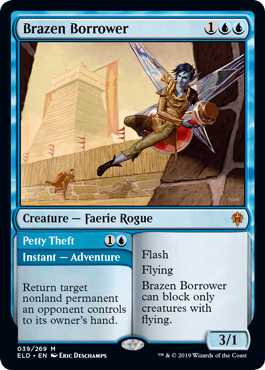
Brazen Borrower comes in at 12th due to its consistency in being a useful card and a great attacker as a 3/1 flier for 3. Petty Theft is a great adventure spell, probably one of the best, and it works perfectly alongside Borrower’s statlines and the strategy at play in blue tempo decks. Returning a nonland permanent for just is incredible when you have targets without ETB abilities to hit.
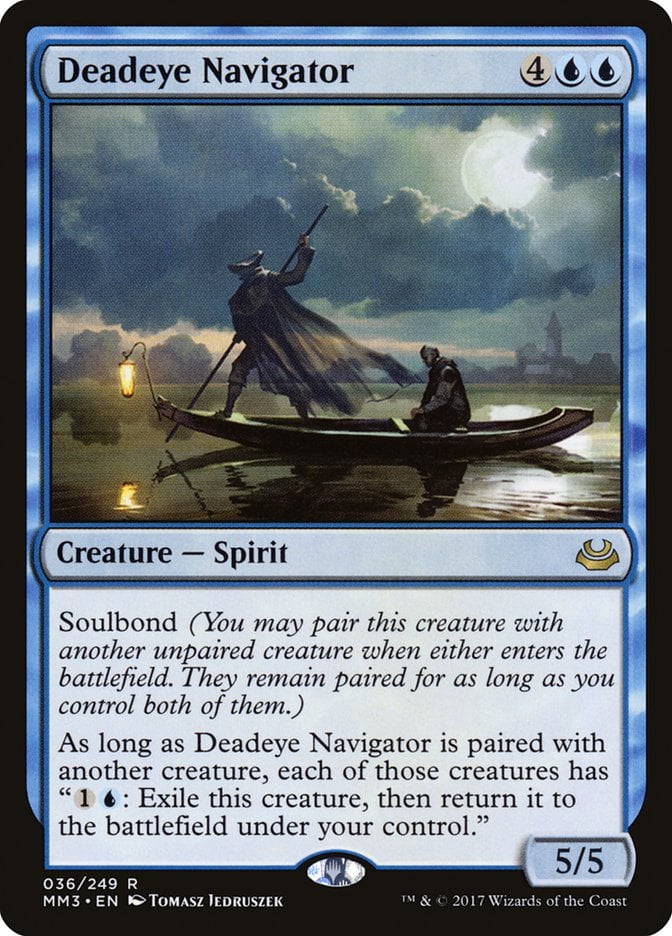
Deadeye Navigator quickly becomes the most worrisome threat when it enters the battlefield across the table from you. It has such sheer combo and value potential by being able to flicker a creature for just that it must be dealt with promptly and effectively.
While it doesn’t end games itself, there’s a long list of other, single cards that absolutely do when paired with it. Even if you’re not going to get one-shot by an infinite combo by it, the value of that many ETB triggers will surely begin to overwhelm you.
#10. Hullbreaker Horror
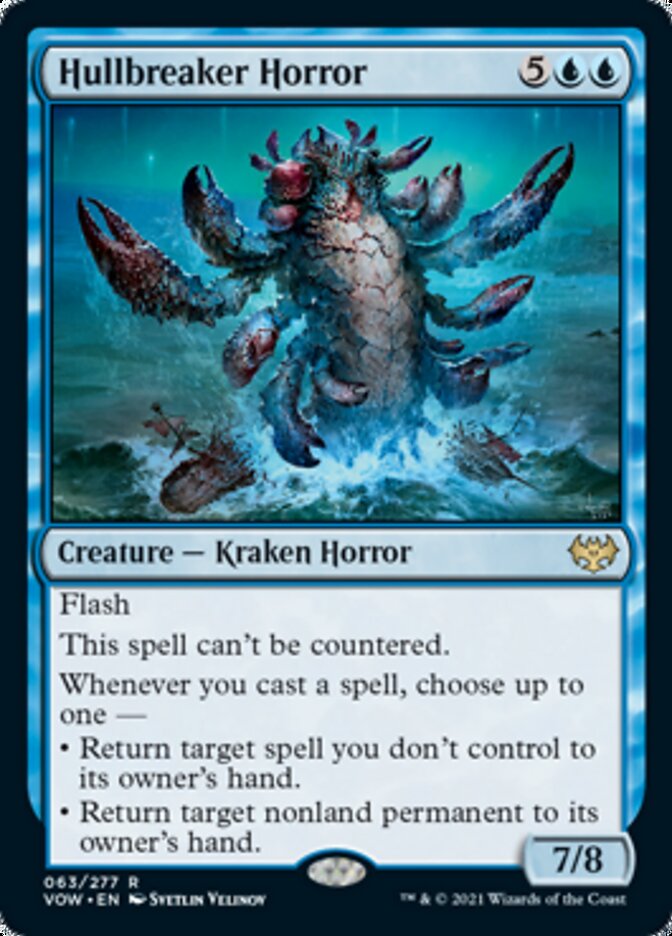
Hullbreaker Horror is a major combo piece in Commander—and previously Standard—to lock out opponents and go infinite. It works specifically well in decks with Polymorph, which can get out and into play early on. To actually win, it requires that you assemble multiple other pieces to generate excess mana and have a spell to play an infinite number of times. Despite that requirement, effective cEDH decks, like Urza, Lord High Artificer, can still consistently assemble this combo and win in the first few turns making it an exceptional creature.
#9. Thought Monitor
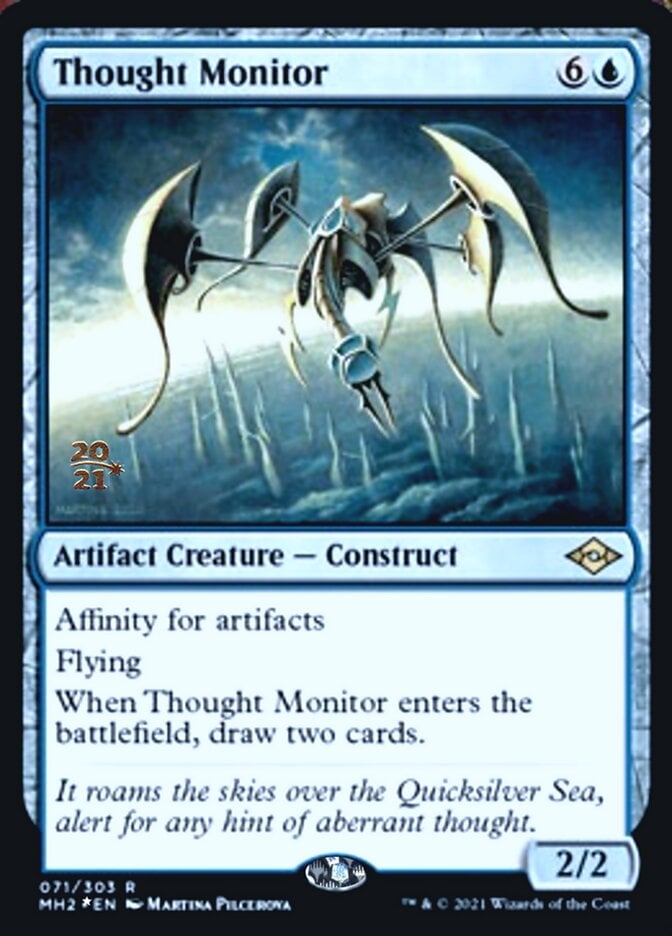
Thought Monitor is a 2/2 flier for with affinity for artifacts and an ETB ability that draws you two cards. This is the perfect piece for Legacy and Modern affinity decks to keep the engine fueled and running. It single-handedly revitalized those decks into competitive lists labeled as “8-cast” and has done an incredible job since it was released. It also fits well into blue-based artifact decks as a way to draw cards cheaply and get a nice creature in play.
#8. Spellskite

Spellskite is a must-include on this list, and I think it would be wrong to rank it any lower. It’s a crucial sideboard (and sometimes mainboard) card for decks of any color thanks to its Phyrexian mana activation cost as a way to stop combo or infect decks in their tracks. At many points in Modern’s lifespan, and for many decks, this was the ace in the hole for decks like infect or Splinter Twin.
#7. Gilded Drake
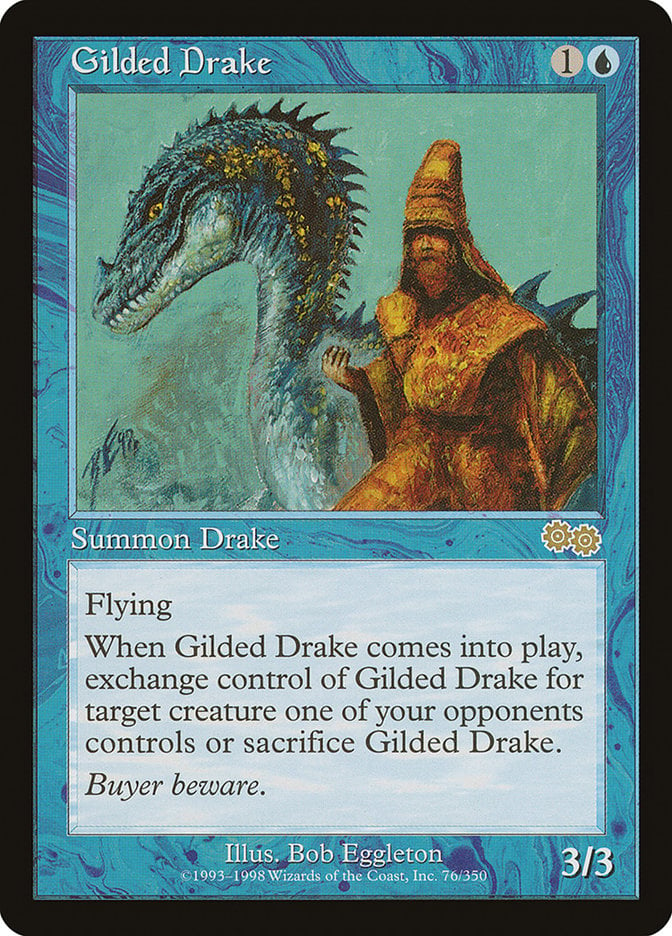
Despite being incredibly inaccessible, Gilded Drake is still one of the strongest blue creatures. It doesn’t copy a creature, but instead swaps place with it and the opponent who previously controlled it. The drawback is you’re giving them a 3/3 flier, but more often than not, you’re going to be taking control of something far more powerful and crucial to their game plan.
#6. Hullbreacher
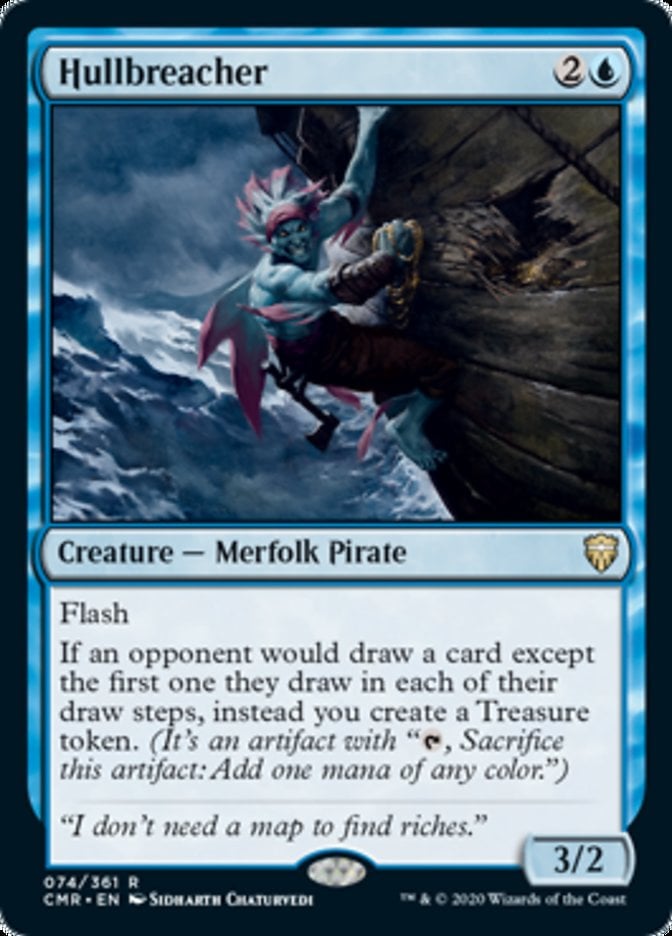
Until its ban from Commander, Hullbreacher was a problem to say the least. Its static ability of shutting down additional draws single-handedly stopped many infinite combos and generic abilities from functioning. It was so game-defining as a stax piece that it eventually got removed. Recently, it’s played in Legacy as a combo piece with Day's Undoing. While that might not be the most powerful or efficient deck, its history in Commander warrants its ranking.
#5. Thassa’s Oracle
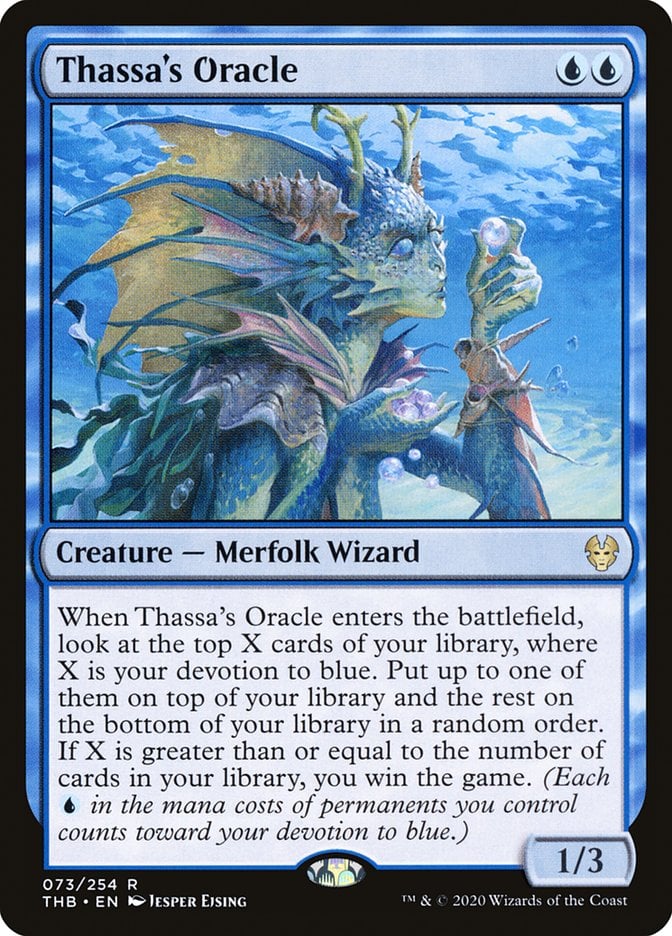
Thassa's Oracle is the most important combo piece for so many combo decks across Commander and Legacy. It simply wins you the game if you manage to have an empty, or in some cases near-empty, library, which isn’t nearly as hard as it seems. There’s many ways to win with this in Commander, like pairing it with Demonic Consultation, and it’s the primary mover for Doomsday decks.
#4. Ledger Shredder
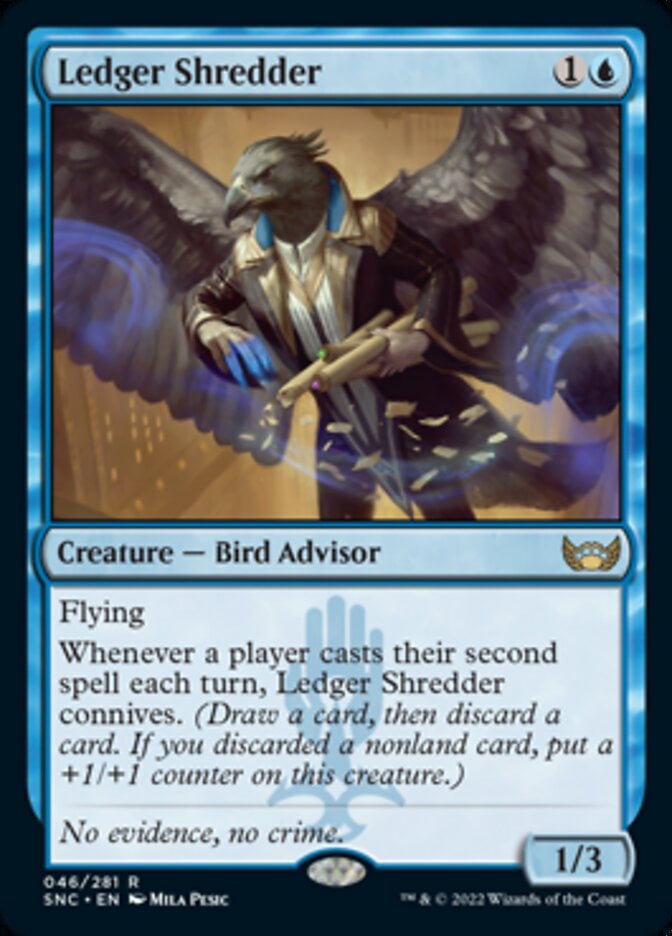
Ledger Shredder is one of the newer cards on this list, but it’s already made a lasting impact across multiple formats as a cheap flier and card advantage engine. It connives whenever any player casts their second spell, which occurs just about every single turn in formats like Modern or Legacy.
At the very worst, you get a +1/+1 counter and some slight card advantage, and at best, you get to seriously delay your opponent’s own game plans by having them choose not to feed the shredder over playing good cards themselves.
#3. True-Name Nemesis

True-Name Nemesis was to Legacy what Hullbreacher was to Commander. It was a format-warping card that provided game-winning advantages to the player and which had very little ways to interrupt it.
In True-Name’s case, it was the primary win condition for Grixis decks that backed it up with efficient interaction like Force of Will. It could only be killed easily by sacrifice effects like Hymn to Tourach and was a large reason behind many deck’s sideboard.
#2. Snapcaster Mage
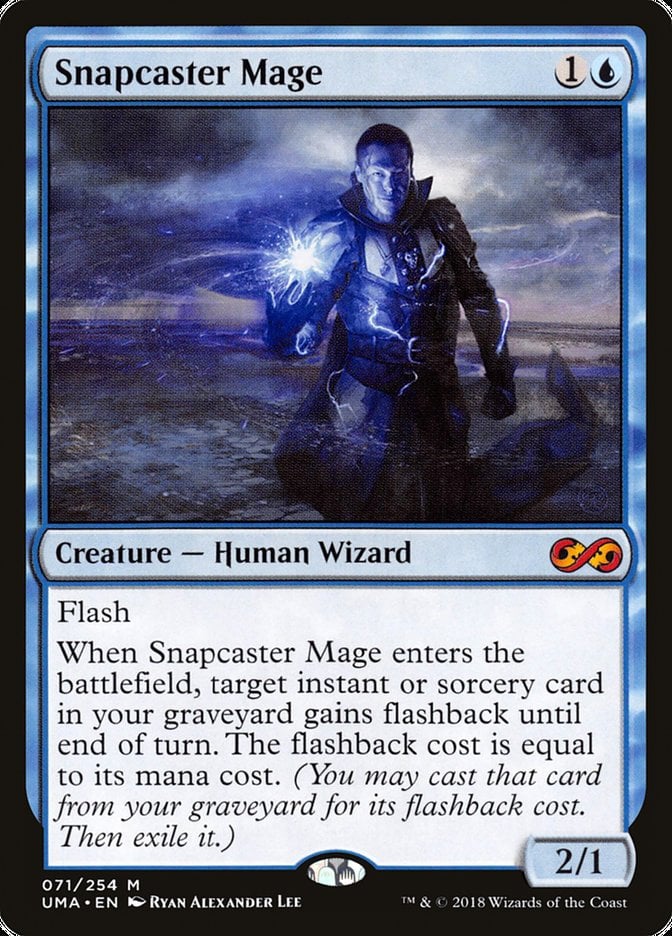
The runner up for today is none other than Snapcaster Mage. While Snap has certainly fallen from grace in the formats it used to dominate, it’s still one of the most efficient and incredible blue creatures.
It provides plenty of value through the graveyard and in multiple forms. It can be a way to get a second Counterspell to hold off an incoming threat or even be an aggressive way to get an additional 3 damage from a Lightning Bolt. Even decks that don’t have a lot of blue cards can run snap due to its versatility, cheap mana cost, and limitless potential.
#1. Delver of Secrets / Insectile Aberration
I can’t think of a more deserving creature to be in first place than Delver of Secrets. To this day, Delver defines and shapes formats as an efficient and effective early threat with incredible synergies with other tempo-oriented cards. Even at its earliest point, Delver was an all-time favorite in Standard and Modern.
Its power comes from the deck’s ability to consistently flip it into a 3-power flier on turn 2. When it’s backed up with cheap counterspells and card-advantage engines, it’s incredibly hard to beat. That is, unless you reveal a land 4 turns in a row!
Best Blue Creature Payoffs and Synergies
For as long as blue has had low-profile creatures and tempo at its heart, it’s also had red as an incredible color to pair it with. Red’s cheap removal, powerful resource generation, and early threats have always gone well alongside blue’s other cheap creatures and supporting spells. Whether it’s the Izzet Delver decks across multiple eternal formats or the entire strategy of spellslinging altogether, red has always worked incredibly well with blue creatures.
Specific cards of note that have historically been included are Lightning Bolt, Ragavan, Nimble Pilferer, and Blood Moon.
Another classic pairing with blue creatures is, well, other blue spells! Blue is all about tempo and limiting what your opponents’ can do in each aspect of the game. Regardless of the format or power level, most mono-blue creature decks build around deploying one or two cheap creatures into play and then dedicating the rest of their resources to locking out opponents. Sure, it’ll take five or six turns to kill somebody with a cheap flier or two, but if you counter every piece of removal they play, they’ll still lose.

In terms of the bigger blue creatures, which don’t work well in cheap tempo decks, your strategy almost always involves drawing cards or countering spells. Blue is the ultimate card-drawing color, and that goes a long way. In fact, you’re usually just scaling up the tempo strategy previously mentioned. In this case, you’re using all your additional cards to protect the Consecrated Sphinx or other bomb flier that’s drawing you them in the first place!
Wrap Up
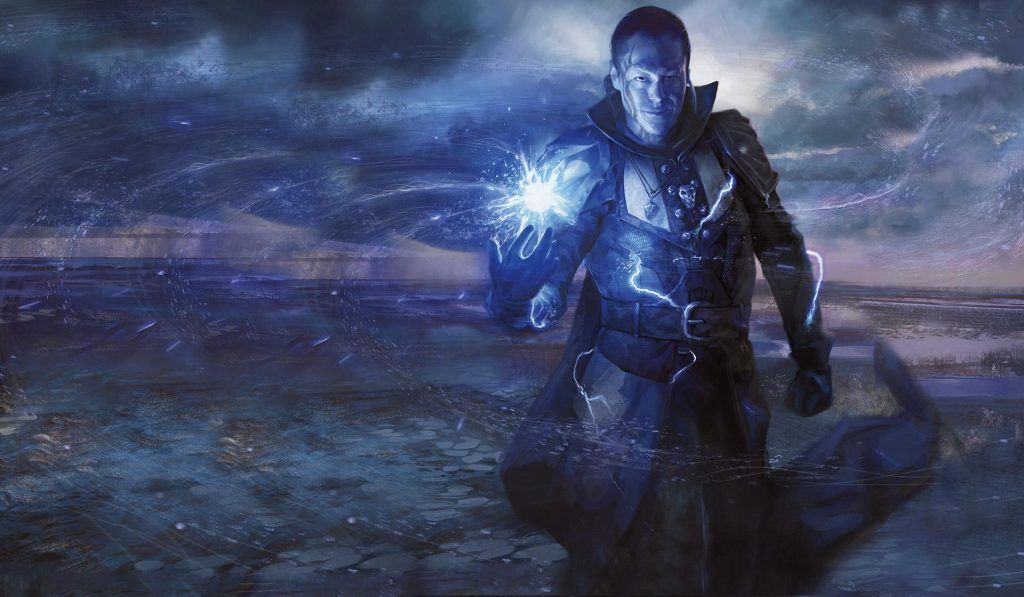
Snapcaster Mage | Illustration by Ryan Alexander Lee
That’s all I’ve got for you today on blue creatures. Blue is my favorite color to play in Magic, and even though creatures aren’t usually at the forefront of blue decks, it still has some of the most powerful creatures in the game.
What do you think of the creatures in blue’s arsenal? Are you overwhelmed by how many excellent and deck-defining choices there are? Or are you maybe a little disappointed by the lack of diversity among the most powerful ones? Let me know your thoughts in the comments below or come chat about it in the official Draftsim Discord.
Until next time, stay safe, and stay healthy!
Follow Draftsim for awesome articles and set updates:

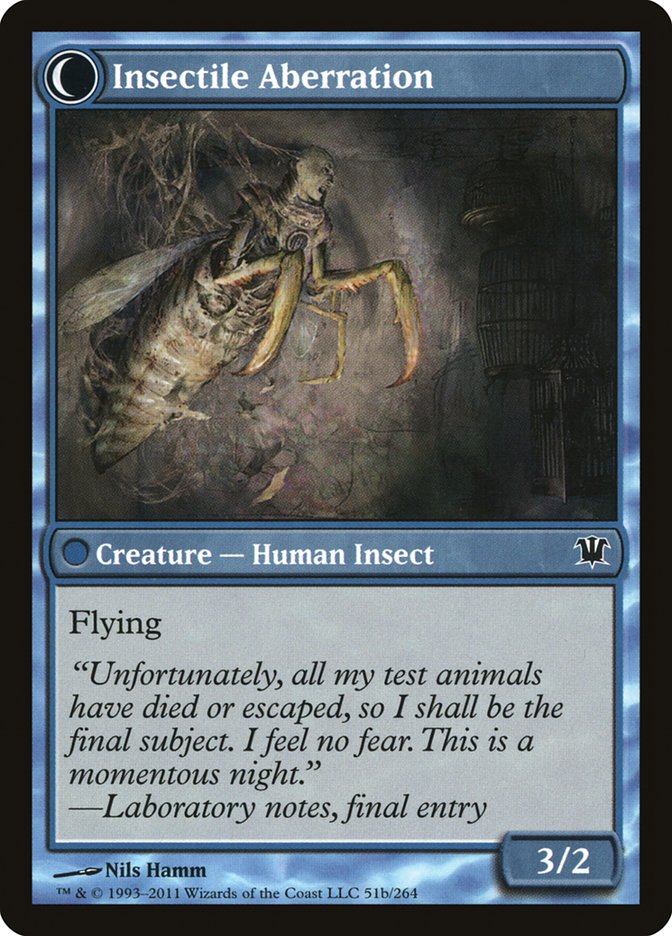
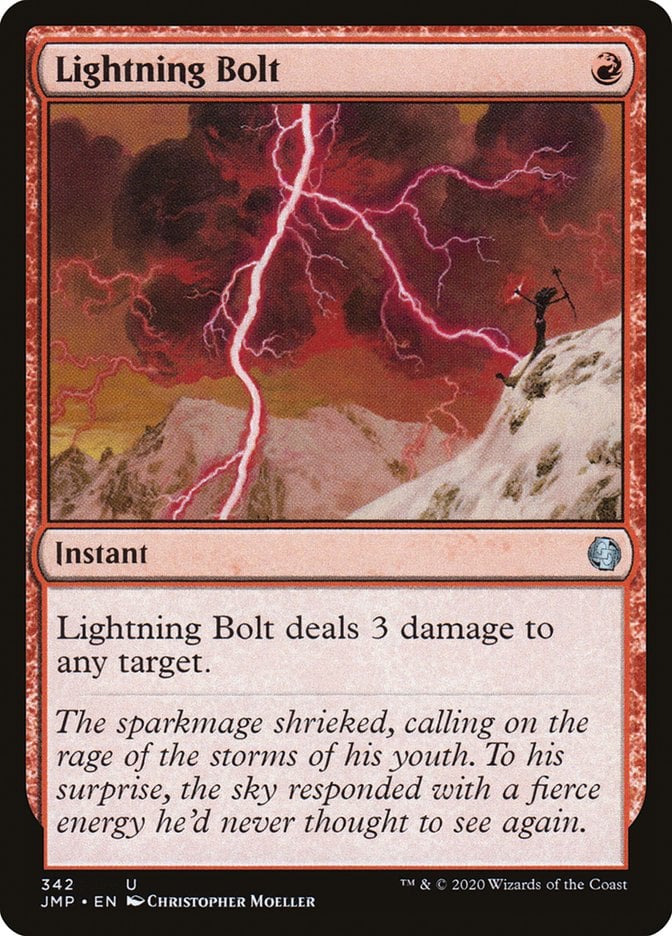
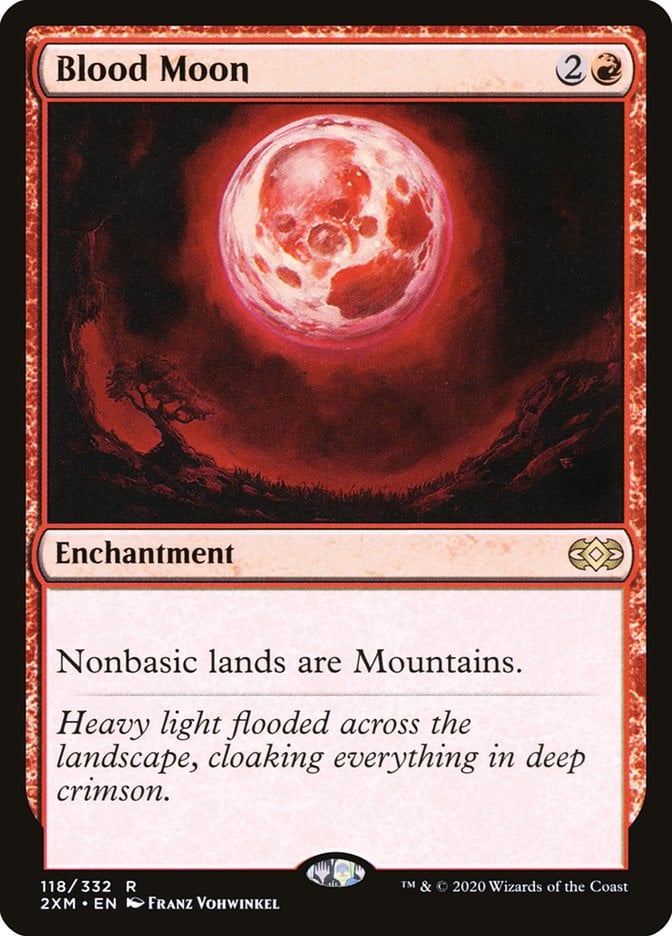
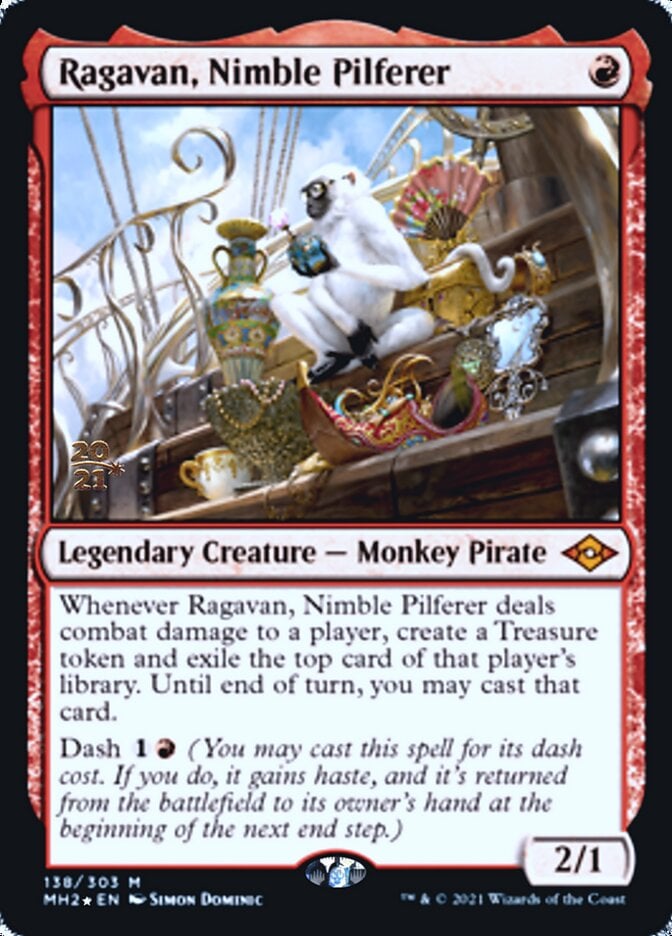
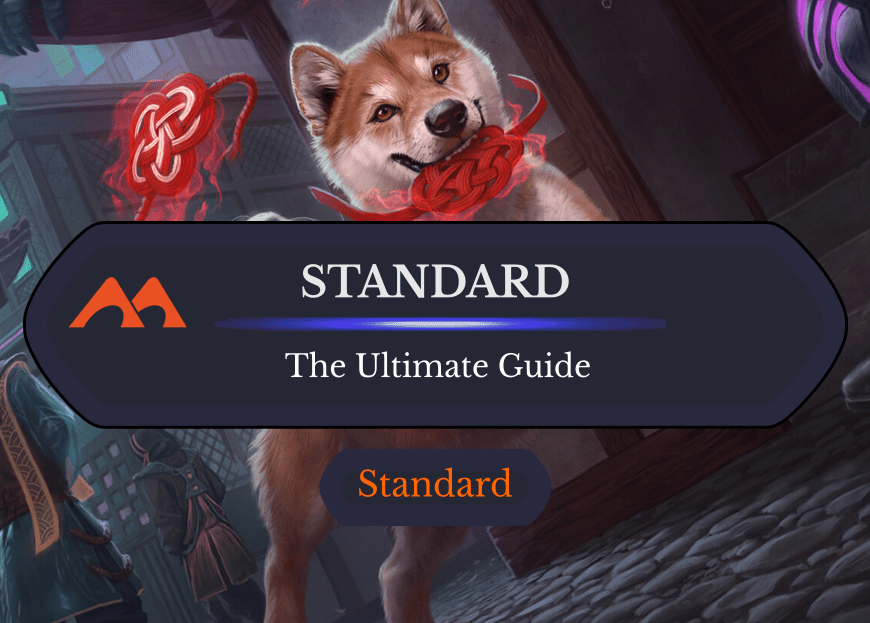

Add Comment